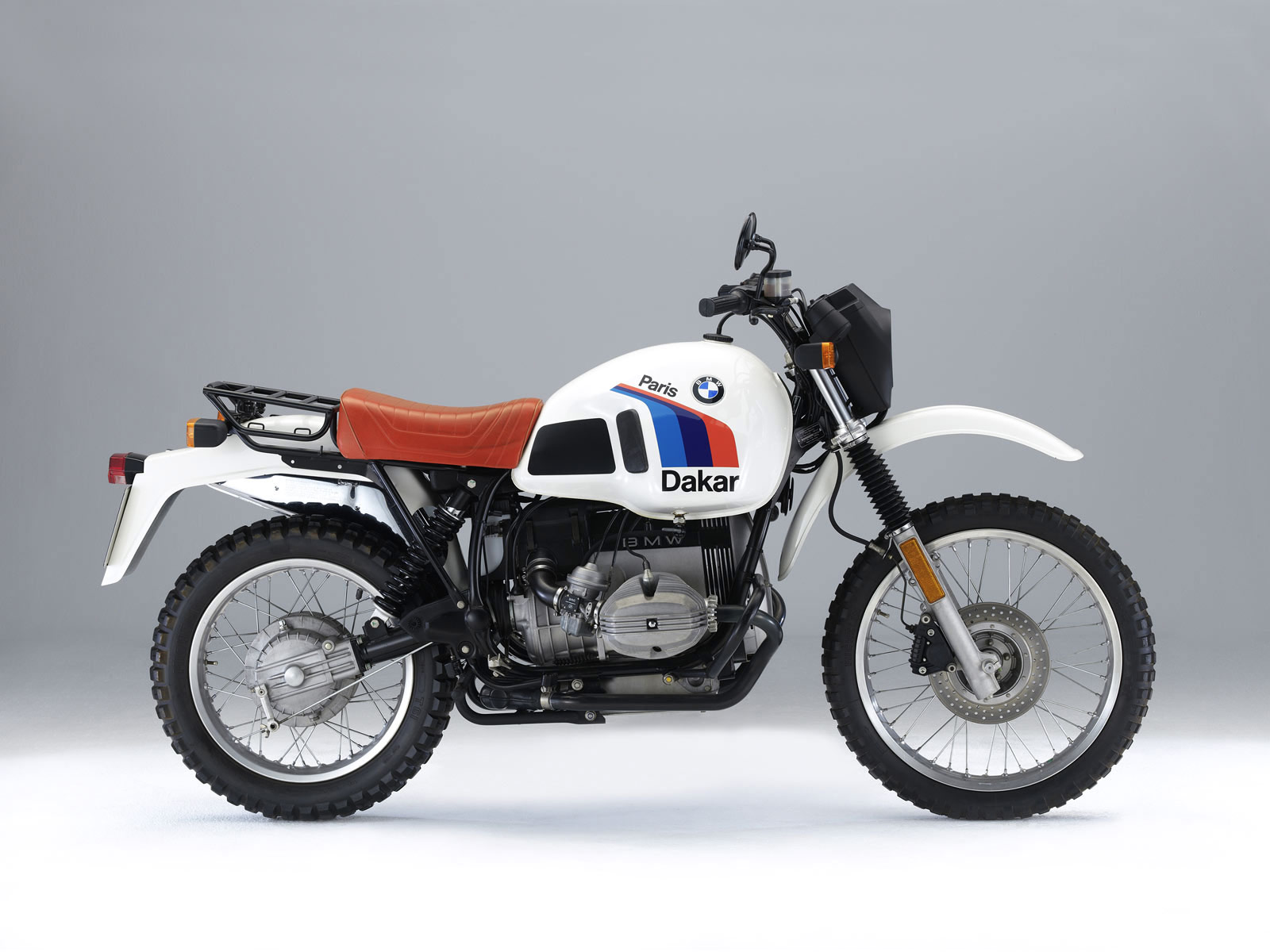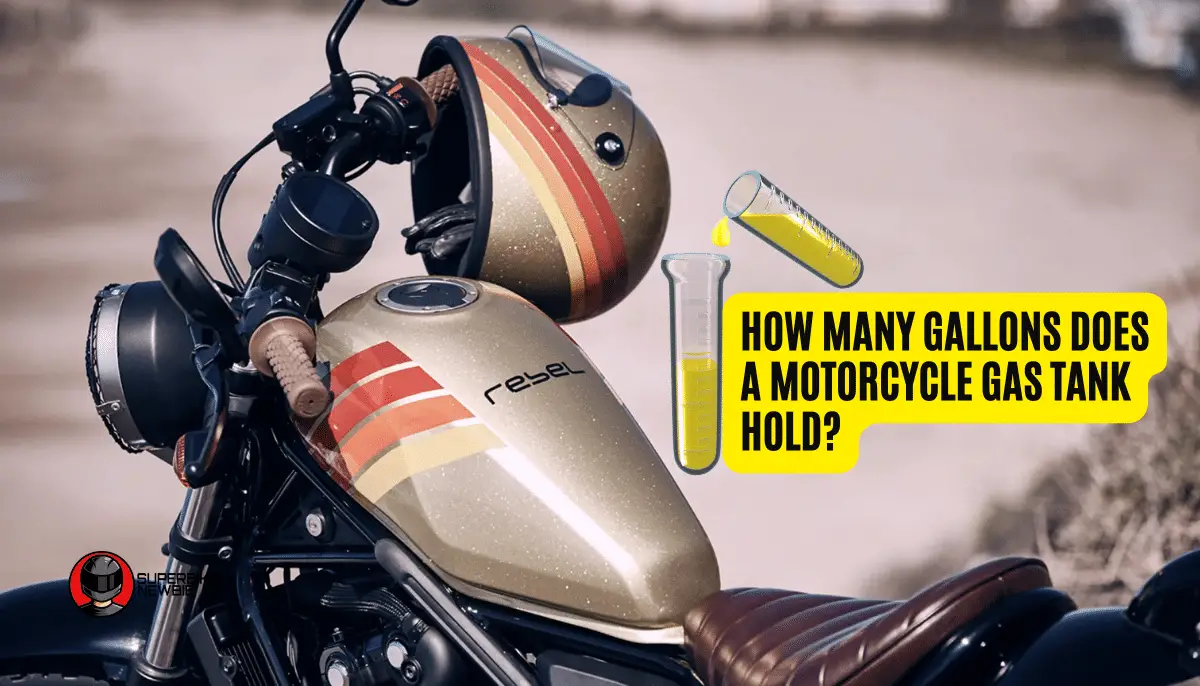If you have been in the motorcycling world for a bit, you have definitely had or heard conversations about fuel tank capacities.
Discussing engines, electronics, handling, and tank fuel capacities with fellow riders is a regular feature with us bikers. Especially when you have a fellow biker who wants to buy a touring motorcycle!
In this post, I am going to talk about how much gas or gallons of fuel a motorcycle can hold and other things that relate to it.
So how many gallons does a motorcycle hold? A motorcycle, in general, can hold anywhere between 1.5-10 gallons of fuel. The smallest tank size is the 1.5 gallon tank that the Honda Grom can hold, and the largest is the BMW G/S Paris Dakar, which can hold 10 gallons of gas.
Table of contents
How large are motorcycle fuel tanks?
Here’s how many gallons some of the most popular motorcycles can hold.
List of some popular motorcycles and their tank-holding capacities in gallons.
| Model | Gas Tank Capacity (Gal) |
| Honda Grom | 1.45 |
| Aprilia SX50 | 1.9 |
| Kawasaki KLX250S | 2.0 |
| Honda CRT250L | 2.1 |
| Harley-Davidson Forty-Eight | 2.1 |
| Yamaha MT125 | 2.6 |
| BMW G310GS | 2.9 |
| Honda Rebel 300 | 3.0 |
| Yamaha YZF-R125 | 3.05 |
| Harley-Davidson Iron 883 | 3.3 |
| Honda CB125F | 3.4 |
| Honda CBR250R | 3.4 |
| Honda CBR300R | 3.4 |
| Honda X-ADV 750 | 3.4 |
| KTM 390 Duke | 3.5 |
| Harley-Davidson Street 500 | 3.5 |
| Harley-Davidson Street Rod | 3.5 |
| Yamaha YS125 | 3.7 |
| Yamaha YZF-R250 | 3.7 |
| Honda NC750X | 3.7 |
| Aprilia RS4 50 | 3.8 |
| BMW F750GS | 4.0 |
| Kawasaki W800 Café | 4.0 |
| Honda CRB1000RR | 4.3 |
| Honda CBR500R | 4.5 |
| Suzuki GSX-R600 | 4.5 |
| Kawasaki Ninja ZX-6R | 4.5 |
| Suzuki GSX-R 750 | 4.5 |
| Yamaha YZFR1 | 4.5 |
| Suzuki GSX-S1000F | 4.5 |
| Harley-D XL1200C Sportster | 4.5 |
| Kawasaki Ninja 500 | 4.8 |
| Honda Africa Twin 1100 | 5.0 |
| Harley-Davidson Sport Glide | 5.0 |
| Harley-Davidson Fat Boy 114 | 5.0 |
| Yamaha FZ6 | 5.1 |
| BMW S1000XR | 5.3 |
| Suzuki GSX1300R Hayabusa | 5.5 |
| Ducati Desmosedici 800RR | 5.7 |
| Harley-Davidson Road King | 6.0 |
| Harley-Davidson Street Glide | 6.0 |
| BMW R1200RT | 6.6 |
| Benelli TNT 600GT | 7.13 |
| Suzuki DR750 | 7.7 |
| Honda ST1300 Pan European | 7.7 |
| Boss-Hoss Bikes | 10 |
| BMW R80 G/S Paris Dakar | 10 |
How to find out the fuel capacity of your motorcycle fuel tank?
Typically, the fuel tank capacity of a motorcycle depends on the type of bike it is. For example, small-engine bikes will have small fuel tanks. Honda Grom is a great example.
The Honda Grom has an engine capacity of 125cc and a fuel capacity of 1.45 gallons.
On the other end of the spectrum, you have touring bikes like the BMW R80 G/S Paris Dakar, which can hold 10 U.S. gallons of gas. Touring motorcycles are expected to cover long distances before fill ups at the gas station. 
The average motorcycle fuel tank holds between 3 to 6 gallons of gas, but some models can range from as little as 1.5 gallons to as much as 10 gallons.
To find the fuel capacity of your motorcycle, follow these steps:
- Consult your shop manual or owner’s manual: That will not only have the motorcycle tank capacity but pretty much everything else you could think of. Also, it would be the most accurate and reliable source of information.
- Check your fuel tank: Some motorcycles have their fuel capacity embossed or printed on the tank itself or on the fuel cap. Look for a number followed by “gal” or a similar/related symbol.
- Google it: You should be able to search online using your motorcycle’s make, model, and year. Be sure to use websites that can be trusted, like the manufacturer’s website or a famous motorcycle forum, for example.
Understanding the size of my fuel tank and the amount of gas it can hold is super important in planning a long trip or even calculating the average mpg (more on that later). While most bikes now will show you the fuel range directly on the instrument cluster/panel, it’s important to know the key specs of your motorcycle, regardless!
Why do different motorcycles have different fuel tank capacities?
How much fuel a motorcycle can carry depends on a number of factors. The most important of these is the core purpose of the bike itself.
For example, Is the motorcycle a touring motorcycle, essentially like my Kawasaki Versys 1000? Is the motorcycle a track-focused liter-class superbike, like the Kawasaki Ninja ZX-10R, for example, or is it a naked bike with a smaller engine size, like my KTM Duke 390, that I would much rather use for daily city commute?
The core function of the motorcycle dictates its fuel tank capacity!
The Versys, which is a touring/adventure motorcycle, can take in 5.55 gallons of gas, and a relatively bigger engine, so does the ZX-10R.
Understanding Fuel Economy: What is fuel economy? How do I find out my gas mileage?
Unless your motorcycle does some ridiculous numbers like the Honda Cub (upwards of 180MPG), you want to make sure you understand and care about Fuel Economy.
Well, truth be told, you should always care about fuel economy. The Honda Cub example was just an anecdote.
So what is Fuel Economy? Fuel economy is the amount of fuel consumed to travel a certain distance. It’s usually measured in miles per gallon (MPG) or kilometers per liter (KMPL). It varies from motorcycle to motorcycle and depends on engine size, weight of the rider, riding style, terrain, and weather conditions. Generally, motorcycles with smaller engines and lighter weights tend to have the better fuel economy. Case in point, the Honda Cub! Would you believe that a gallon of gas can take it 188 miles!
The fuel economy is also referred to as the fuel efficiency of a bike or the fuel mileage.
Calculating Gas Mileage
Calculating your motorcycle’s miles per gallon (MPG) isn’t rocket science. Here’s what you need to be aware of:
- Record your odometer as soon as the low fuel light comes on.
- Now fill up as much fuel as your motorcycle gas tank hold
- Carefully down the exact volume of fuel added
- Ride your motorcycle as you normally would. Remember, we are calculating the Gas Mileage for everyday riding.
- As soon as the fuel gauge shows the low fuel light, record the odometer reading
Now you can calculate your gas mileage using this simple formula:
MPG = (Total Miles Ridden) / (Total Gallons of Fuel Consumed)
For example, let’s say I rode 300 miles before refueling and used 5 gallons of fuel. My bike’s MPG would be:
MPG = 300 miles / 5 gallons = 60 MPGThe difference between the final and the initial Odometer reading gives you the Total Miles Ridden.
The amount of fuel your put in when the low fuel light went off is the Total Gallons of Fuel Consumed.
Reserve fuel
It is an important thing to note that most motorcycles have a reserve tank. Not that it physically exists as a separate tank. It’s just that when the fuel hit a certain low level, a low fuel light comes on to tell you that the fuel level is low.
In older versions of many motorcycles, this would require manual intervention. The fuel supply to the engine would be cut off and would require the rider to open up the value to the reserve fuel.
This was typically in motorcycles and scooters back in the day when fuel level indicators were not present on the instrument panel.
Please note that your motorcycle’s fuel efficiency or MPG depends on factors like the weather, road conditions, and riding style. I’ve experienced better fuel economy during summer than in winter, as cold weather reduces fuel efficiency.
Remember, the average motorcycle gets between 40 and 80 MPG, so it’s essential to be aware of the range appropriate for your bike. Lightweight bikes ranging from 50cc to 125cc are more fuel-efficient, reaching 90-150 MPG, while 600-1300cc sportbikes usually have poorer fuel consumption due to their higher performance and top speed.
Ultimately, understanding your motorcycle’s fuel economy and being proactive in calculating gas mileage will help you plan that long ride more efficiently and avoid any unwanted surprises on the road.
Maximizing Fuel Efficiency
As a seasoned rider, I’ve learned a few tricks to maximize fuel efficiency on my motorcycle. In this section, I’ll share some of these tips to help you get more miles out of every gallon.
Tips to Get More Miles out of a Full Tank
1. Maintain correct tire pressure: Checking and keeping the tire pressure within the recommended range not only extends its life but also improves fuel efficiency. Low tire pressure causes more friction than necessary, which leads to higher fuel consumption.
2. Keep your engine well-tuned: A well-maintained engine runs efficiently and consumes less fuel. Regular maintenance, such as oil changes (as per the manufacturer’s), oil filter replacement, and air filter cleaning, is essential to keep the motorcycle running smoothly.
3. Throttle control: Rapid acceleration consumes more fuel, so try to avoid abrupt throttle movements. You need smooth throttle control. Roll and roll off the throttle smoothly. This will not only increase fuel efficiency but also make your tires last longer.
4. Use high-quality fuel: Higher octane fuel burns cleaner and more efficiently, which can improve your motorcycle’s fuel consumption. While it might cost a bit more, it can make a big difference in the long run. Also, it may be necessary as per the manufacturer’s instructions.
5. Pay attention to your riding position: A more aerodynamic riding position reduces wind resistance, which can have an impact on fuel efficiency. Tucking your body closer to the bike and keeping your elbows bent can help you achieve better mileage.
6. Limit excess weight: Carrying unnecessary weight increases fuel consumption. Remove any unessential items from your motorcycle before hitting the road.
7. Plan your route: Knowing your route ahead of time and avoiding traffic can help you save fuel by reducing stop-and-go situations and unnecessary idling time.
Remember, a motorcycle’s gas tank capacity typically ranges between 2 and 6 gallons. Smaller tanks can be found on commuter bikes, while larger tanks are common on touring and adventure motorcycles. By taking these simple steps, you can easily boost your fuel efficiency and get the most out of your motorcycle’s gas tank.
8. Riding mode: Not every bike will have this option. But with some bikes, the instrument cluster will show the “Economy” indicator. The more you ride at the RPM where the Economy indicator lights on, the more mileage you will get out of your bike. Additionally, cutting down the engine power by selecting a lesser power mode will also help improve your bike’s fuel consumption.
Conclusion
While most motorcycles can hold 1.5-10 gallons of fuel, what really matters is knowing the size of the gas tank on your bike. Armed with the knowledge of how far a full tank of gas can take you, you can plan your rides better, including long rides.
